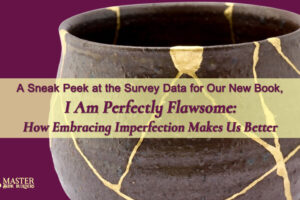Throughline: The “Wiring Diagram” for Building Your Book
It doesn’t matter whether you’re writing a fantasy novel, a memoir, history for a popular audience, a nonfiction business book, or any other genre you can think of, your job will be easier – and your book will be better – if you take the time to find your throughline.
Too bold? I’ll go further. Finding your throughline eases the task and improves the quality of just about any form of communication you need to deliver. That includes a keynote speach, an op ed piece, a blog post . . . you name it.
Even a TED Talk?
Yup! Here’s how Chris Anderson put it in his book, TED Talks: The Official TED Guide to Public Speaking, in the chapter entitled “The Throughline: What’s Your Point?”:
“Since your goal is to construct something wondrous inside your listeners’ minds . . .”
No pressure, right? But shouldn’t your aspiration for your book be the same?
Here’s how Anderson completed his thought on the role of a throughline:
“. . . you can think of the throughline as a strong cord or rope, onto which you will attach all the elements that are part of the idea you’re building.”
But wait, what does an 18-minute talk have to do with writing a book? Well, look again at those phrases construct something wonderful and the idea you’re building. Isn’t that what you’re doing in both forms of communication, presenting a talk and publishing a book, building ideas for your audience?
It should not surprise you that so many TED speakers are also authors, nor that the throughlines for their talks apply to their books, as well. Some throughline examples from his book that you might recognize:
“More choice actually makes us less happy.”
— Barry Schwartz, TED Talk: The Paradox of Choice and his book with same title
“Vulnerability is something to be treasured, not hidden from.”
— Brené Brown, TED Talk: The Power of Vulnerability and her book Daring Greatly: How the Courage to Be Vulnerable Transforms the Way We Live, Love, Parent, and Lead
“With body language, you can fake it till you become it.”
— Amy Cuddy, TED Talk: Your body lanhuage may shape who you are and her book Presence: Bringing Your Boldest Self to Your Biggest Challenges
Book building
Anderson’s phrasing of his throughline concept in terms of “constructing” and “building” ideas resonated with Yvonne and me as we wrote The How to Write a Book Book (link in sidebar) – which followed our throughline, “how writing a book is like building a house.”
In the chapter on Getting Started, we included a section, “Throughline: ‘Electrifying’ Your Idea,” explaining:
“You might think of the throughline in our house building analogy as the wiring systems that connect and energize every part of the structure. All the appliances, lights, tools, communication devices – heck, even many pieces of furniture these days – need to plug into the wiring to work. . . .
“With devices in your home, anything you plug in must be compatible or supported by the [wiring] system. For your book, every topic, example, or story must connect with and support your throughline.”
We decided that explaining what a throughline is and even what it contributes to your writing was not enough, so right after publishing The How to Write a Book Book, we began putting together a workbook that greatly expands on the section quoted above, Finding Your Throughline: Electrifying Your Idea. Much of this post is adapted from the Introduction to the workbook.
Anderson states that a throughline should encapsulate your idea into “no more than fifteen words” providing “robust content” to build from.
Our advice?
Don’t obsess
Take a few minutes to think about the core idea for your book. Think about your message and how you might describe the cord that connects all its elements.
But don’t obsess over it!
Nor about the fifteen word limit.
Nor about getting the phrasing just right, as you begin writing your book.
Remember, we can express almost any concept in a variety of words and phrases – we’re writing in English, people! We tinkered with the wording of our throughline, from Yvonne’s first take when she started writing years ago and all the way through our joint efforts as we finished and released the book.
How our throughline evolved
As mentioned above, early on when Yvonne talked about “The Book Book” she would say something simple, like:
“It’s about how writing a book is like building a house.”
Short and sweet. Stays under fifteen words. Clear enough, we think, to help her decide what went in and what stayed out.
By the time we’d worked together to complete and move the manuscript into page layout, cover design, and publication, we’d refined our throughline to this version, which we used to open our “blurb” at the top of the back cover:
“From foundation to flooring, from fixtures to furnishings, the process of building a house can teach us much about writing a book.”
We know, twenty-two words. We hereby authorize you to forgive yourself when you go over fifteen! The shorter, the better, yes. But the purpose is to come up with that “strong cord” that tells you on a moment’s reflection whether each element connects, supports, and enriches your message.
Or, whether the element you’re considering needlessly repeats, confuses, over-complicates, or goes off on a tangent from your message.
And to prove our point about finding more than one way to phrase your throughline, here’s another variation that we put on our Amazon listing page:
“You might be surprised at how much the process of building a house can teach us about writing, designing, and publishing a book.”
This third iteration, at 23 words, aims to focus a bit more on the book side of the building analogy, expanding beyond writing into design and publishing.
Of course, at this stage the function of the throughline has shifted. From guiding our decisions as authors during the book building process, our throughline can now morph into a marketing role, guiding the decisions of readers whether our book should be part of their collection.
Related Concepts
That potential marketing role hints at how finding your throughline can make every part of your book writing and publishing journey easier – and your final product stronger. Contrasting some closely related, but distinct, writing concepts should clarify the unique value of finding and stating your throughline, in a single, short, simple, clear sentence.
Themes, topics, plot lines, even “narrative arc” sometimes get described or treated as synonymous with throughline. But they are not the same. Most of the time you see these other concepts defined as multi-sentence summaries or short lists stating the components of a story, essay, novel, or non-fiction book.
- Beginning, middle, end.
- The 3-act play: set the scene and characters; action around a big problem forcing growth and change; resolution.
- The hero’s journey: departure; initiation; return (each sub-divided into a total of seventeen segments in Joseph Campbell’s classic treatment).
- Freytag’s Pyramid: exposition; rising action; climax; falling action; denouement (resolution).
- The old essay formula: What? So what? Now what?
All of these concepts are important and helpful. Yet all of them spill over into the structure of the book. All fail to capture the crucial form and function of the throughline: simplicity and clarity.
Even an otherwise excellent blog post on the narrative arc as a story structure fell into the trap of muddling it with throughline:
“If the plot is the skeleton of your story, the narrative arc is the spine. It’s the central through-line marking the plot’s progress from beginning to end.”
No, No, NO!
To carry on with their metaphor, if the skeleton represents the plot and the spine represents the narrative arc, then the throughline should be viewed as the spinal cord. A single nerve bundle, it runs through all the vertebrae making up the spine/narrative arc. It also connects and energizes all the bones – and all the organs – that bring the whole body alive.
Another writer adapted the “cord” metaphor this way:
“The throughline . . . is like the rope that the audience will use to pull itself through the story. If you do not provide an adequate throughline, . . . then the audience will lose its grip and . . . they will quit your story. They’ll put down the book. They’ll turn off the movie.”
Shot Through The Heart: Your Story’s Throughline, by Chuck Wendig.
And of course, we adapted the cord idea to our house building analogy by calling your attention to “the wiring systems that connect and energize every part of the structure.”
We also noted Chris Anderson’s caution that your fifteen (or so) word throughline must “provide robust content” – not some generic corporate mission statement, but a specific statement of “the precise idea you want to build inside your listeners.”
So, both simplicity and clarity. In fifteen words. You may be seeing why we decided a workbook was in order!
Keepin’ it simple
To help with the simple side of the formula, we reviewed two strategies: the military Commander’s Intent (CI) technique outlined by Chip and Dan Heath in Made to Stick and my own “3 Arguments” approach from my appellate lawyer days. The two resemble each other in both the problem they address and the solution chosen.
CI addresses the problem that “no battle plan survives first contact with the enemy” by reducing every complex plan to “a crisp, plain-talk statement that appears at the top of every order, specifying the plan’s goal, the desired end-state of an operation.”
I developed my 3 Arguments method, because most appeals court judges like to interrupt and ask questions (hence the term “hot court”). Often they started the moment I opened my mouth to say, “May it please the court …” Sometimes the Q&A took up most, or even all, of my allotted time for argument. Occasionally, their questions gave me no opening to insert my most crucial point.
So I came ready with a full-time argument, a 5-minute version, and a 1-minute (or less) single, complete sentence statement of my case-clinching point. Echoing the CI technique, I crafted that sentence by completing the thought,
“The single most important thing I must say is ____________________.”
Clarity is not so simple
Simple is not enough.
Simply short, still not enough.
Your throughline needs clarity, too. And lest you think that clarity is only about using words in their correct and precise definitions, so that people can understand your meaning – as I did before learning more about throughline – we devoted two chapters and exercises to it.
First, we reviewed Anderson’s “robust content” advice, noting that clarity can be enhanced by including an element of unexpectedness to sharpen the audience’s attention. This might be accomplished with a provocative comparison, surprising claim, or humorous take on the core idea, illustrated by the TED examples listed above.
Second, we adapted another concept from Made to Stick, extracting four of the qualities in their “SUCCESs” formula to suggest “UCES” (pronounced like “uses”) as a useful acronym for
- Unexpected (again),
- Concrete,
- Emotional,
- Stories.
We explained how Aesop’s Fables demonstrate these qualities and how their timeless morals have stuck through the centuries by creating useful analogies to our everyday lives and experience.
Applying these expanded qualities of clarity, your throughline will go beyond merely being understandle. As the wiring system for the book you’re building, it will become both memorable and effective, producing a lasting impact on your readers’ minds – perhaps changing their opinions, their actions, even their lives.
* * * * *
I hope you find the “wiring diagram” analogy and this post useful in your book building. But hey, that’s just the first half of the workbook! We also cover:
- the impact of your genre on finding your throughline,
- thought prompts and templates for getting started,
- a quality checklist,
- how your throughline can be morphed into a marketing tool, and
- my “confessional” showing the pain I put myself through by failing to refine my throughline as I wrote Read ‘Em & Reap.






1 Comment
Leave your reply.